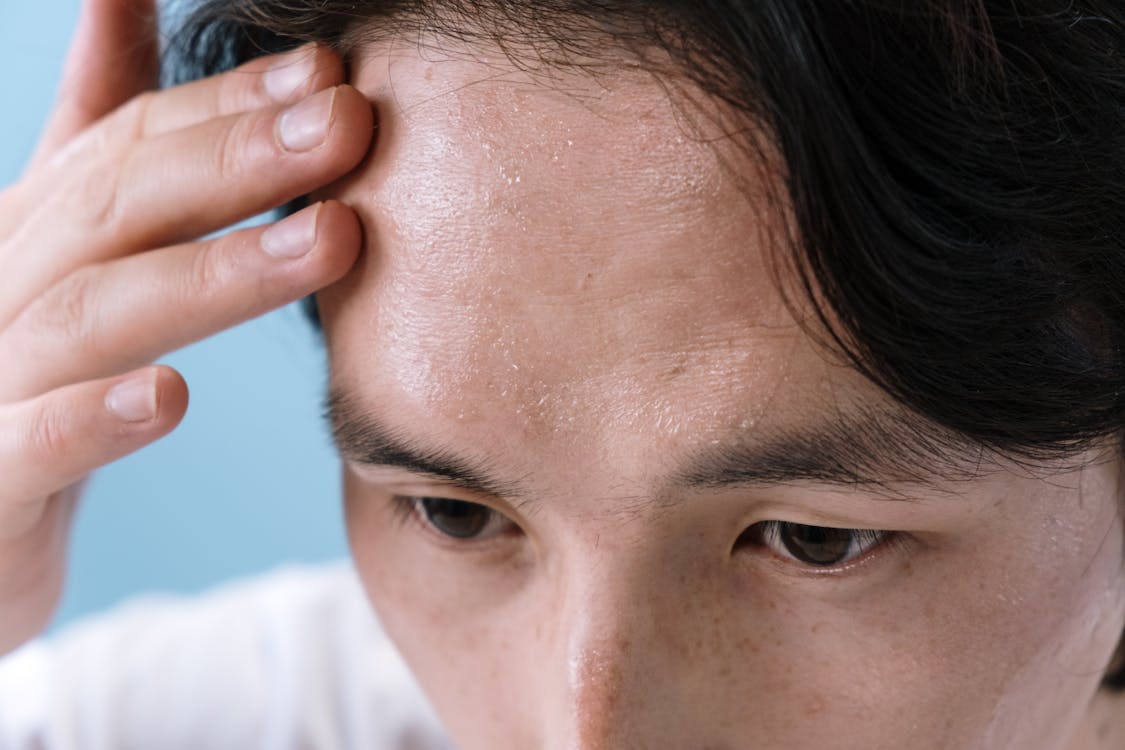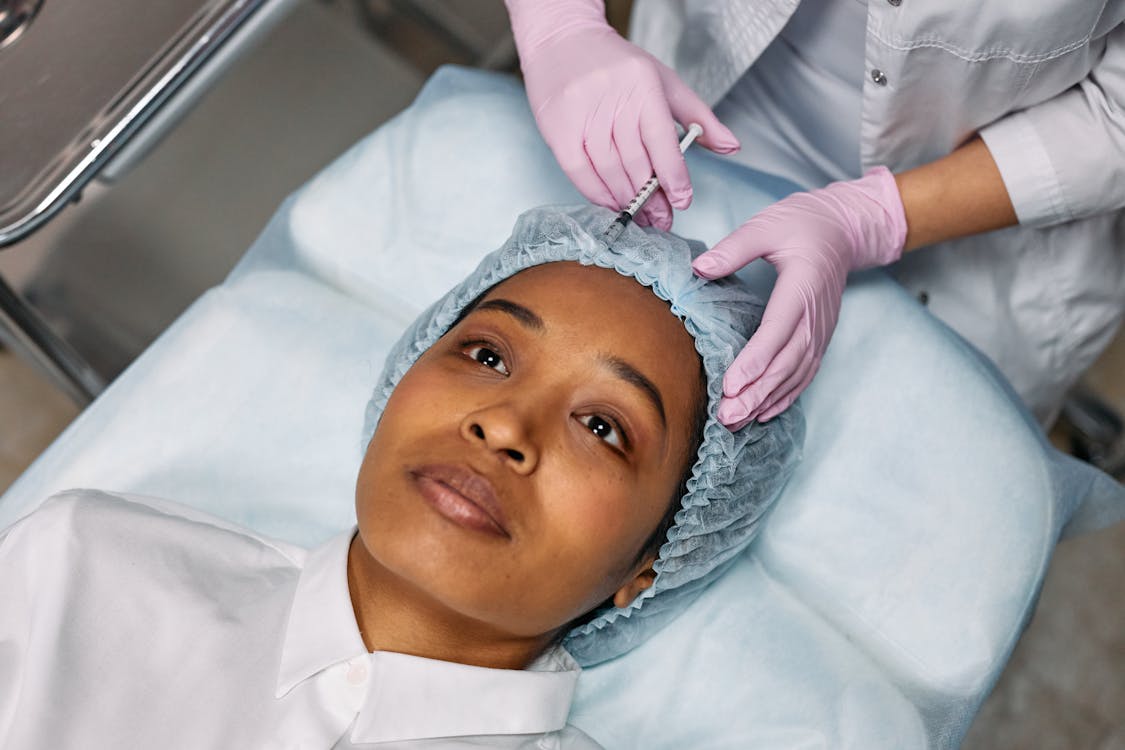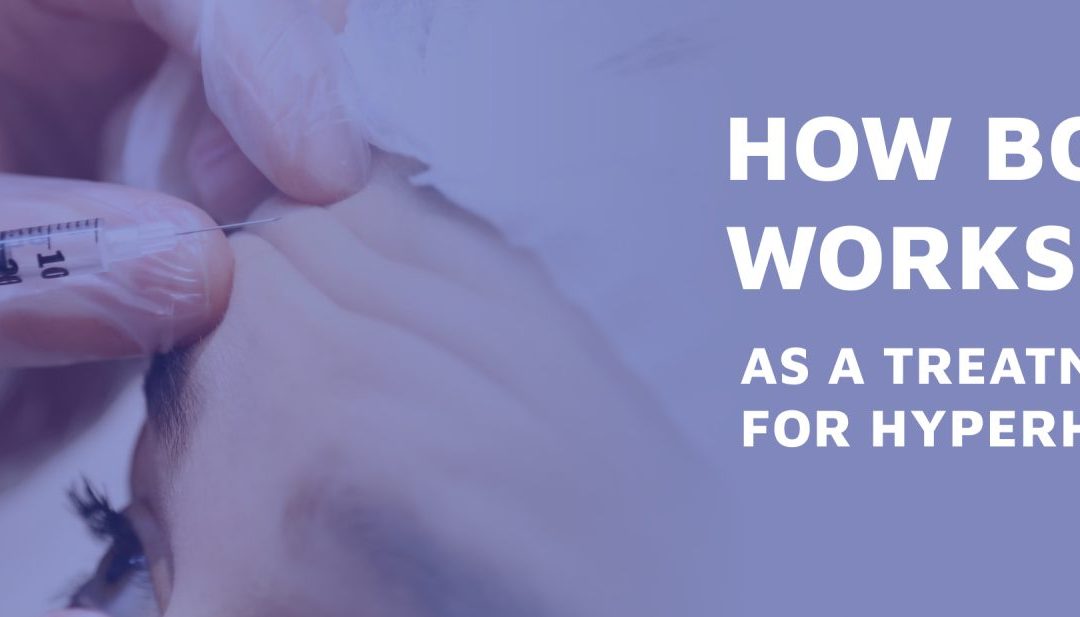Everybody sweats. It’s a regular body function. Most people sweat when they exercise or are nervous, such as during a job interview, or excited, such as on their wedding day. Sweat is a biological part of the body’s function to regulate its temperature and can help remove toxins from the body. However, some individuals sweat too much. Called hyperhidrosis, the condition can interfere with a person’s quality of life.
There are treatments for hyperhidrosis and among them is something that may sound surprising and that is Botox. Botox can do more than just treat facial wrinkles. This guide will help you understand the condition and how using Botulinum toxin injections can help.
What is Hyperhidrosis?

hyperhidrosis
Hyperhidrosis is commonly referred to as excessive sweating which is the perfect explanation of the condition. The body sweats a lot and it’s not connected with physical activity or high temperatures.
It is classed as a chronic skin condition and can be inherited. It is caused by overactive sweat glands (due to a genetic mutation) and can appear wherever there are sweat glands in the body including:
- Underarms
- Feet
- Scalp
- Hands
- Groin
There are various types of hyperhidrosis, with names usually reflecting which part of the body is affected.
Focal hyperhidrosis – also known as primary hyperhidrosis or generalized hyperhidrosis, it is excessive sweating that is not caused by another medical condition, nor is it a side effect of medications.
Axillary hyperhidrosis – excessively sweaty armpits
Plantar hyperhidrosis – affecting the feet
Palmar hyperhidrosis – overly sweaty hands (palms)
There is also secondary hyperhidrosis which has a specific cause or trigger.
Hyperhidrosis in any of its forms can get in the way of daily activities, as well as lead to embarrassment and social anxiety, which could be due to large patches of sweat or the potential for a strong and unpleasant body odor. The condition can also negatively affect the personal relationships of people with hyperhidrosis.
Causes of Hyperhidrosis

Often determining what is causing your hyperhidrosis can help determine the ideal treatment plan for keeping it from disrupting your daily life.
When your body temperature goes up, your nervous system takes over. It responds by activating sweat glands throughout your entire body. The cause of excessive sweating is largely due to malfunctioning nerve signals that cause your body’s eccrine sweat glands to work overtime, all the time, not just in response to stimuli. This is primary hyperhidrosis and there is no known medical cause for it other than being able to pin it down to a genetic mutation.
Secondary hyperhidrosis is caused by several medical conditions. Treating the underlying health problems can often alleviate the impact of overactive eccrine glands that lead to excessive sweating. Conditions where excess sweating is a potential side effect include the following:
- Diabetes
- Thyroid problems
- Menopause
- Some types of cancer
- Disorders of the nervous system
- Infection, including skin infection
Medications that can cause hyperhidrosis include the following:
- Antidepressants
- Pain relievers
- Hormonal medications
- Diabetes medications
If you have any of the above conditions or take any of the above medications, it makes sense to speak with a medical professional. There may be treatments for those health conditions that can also alleviate the symptoms of hyperhidrosis. Remember though, never start or stop any prescribed medication without your doctor’s advice.
Traditional Treatments for Hyperhidrosis

hyperhidrosis
Finding an effective treatment for excessive sweating is the goal of most people who suffer from the condition. A botulinum toxin injection is just one option but is not usually the first course of action. A proper diagnosis by your healthcare provider is the first step to treating the condition.
Diagnosing hyperhidrosis involves lab tests, which may include, but are not limited to, blood and urine testing. This helps rule out an underlying cause that could be the culprit. A sweat test may also be necessary to determine the cause of the sweating and where it’s most concentrated.
There are several prescription antiperspirants that can be used to reduce excessive underarm sweating during normal activities. This is often an effective topical treatment option that starts out as a daily practice, then is reduced to a few times per week. These topical antiperspirants are applied before bed and then washed off in the morning. Clinical-strength antiperspirants contain aluminum chloride, which is more effective than traditional over-the-counter antiperspirant and deodorant products. Keep in mind that they can cause skin irritation, eye irritation, and other side effects, if not used properly. Obviously, these are specifically an axillary hyperhidrosis treatment.
Prescription creams and wipes are another option that your healthcare provider may want you to try before treatment with botulinum toxin. These are used specifically for patients who experience sweating on the face and head. Their main ingredient is glycopyrrolate, which can reduce sweating on the face but may also work as a treatment of palmar hyperhidrosis and plantar hyperhidrosis. Side effects include skin irritation and dry mouth.
Nerve-blocking medications can also be used for the treatment of hyperhidrosis. They work by blocking signals to the nerves that activate your body’s sweat glands. These are typically oral medications that reduce generalized sweating. Common side effects include dry mouth, bladder issues and blurred vision.
Many medical providers also prescribe antidepressants as a medical treatment for hyperhidrosis. Not only can these medications treat the anxiety that goes with excessive sweating, but they can also reduce the sweating itself.
In some cases, nerve surgery or sweat gland removal is recommended. Other options include microwave therapy, which uses energy to destroy sweat glands, and iontophoresis, which involves combining water and a mild electric current to block the nerves responsible for sweating.
Botox for Hyperhidrosis

hyperhidrosis
You might find that your individualized treatment plan progresses to using Botox to halt excessive sweating. It’s not always the first recommended method of treatment but can be quite powerful where other treatments haven’t been successful.
Botox is an effective treatment option because it blocks the nerve endings that play a role in sweat production. It has good success rates for many patients and can help you get back to normal life without the anxiety about too much sweat.
You may associate Botox with facial injections, but it is also effective in other parts of the body to freeze your nerves, which is highly effective for erasing the appearance of wrinkles, but can also halt excess sweat production in your underarms, feet, hands, scalp and groin.
The procedure itself is simple. A numbing agent is usually applied to the area about an hour before the injections for hyperhidrosis are administered. The area is cleaned, then the injections are delivered by a qualified healthcare professional, using a very thin gauge needle. Most patients don’t report any pain during the procedure.
Each of the treated areas will require several anti-sweat injections for the best results. The injections work to counteract overactive nerves and the rate of sweat production is usually decreased a few days after treatment. You will likely notice a significant reduction in sweat production about two weeks after treatment. The nerve-blocking properties of Botox tend to wear off, so you will likely need to repeat your injections of botulinum toxin every three to six months.
Clinical studies have proven the efficacy of botulinum toxin for hyperhidrosis and it’s a medical procedure recommended by many doctors. It’s best to have it done by a board-certified physician so that you can be sure it’s done properly.
The most common side effect of Botox is muscle weakness in the injection sites. This is usually a short-term side effect that fades in the days after your treatment.
It’s important to provide your doctor with an accurate picture of your medical history before undergoing Botox for hyperhidrosis. Not all patients with hyperhidrosis are good candidates for the procedure. Pregnant women, for example, should not undergo Botox (for any reason) until after they deliver their baby.
Potential Complications of Hyperhidrosis
As with any medical procedure, there are some potential complications that can occur when you treat hyperhidrosis with botulinum toxin. While the negative effects of botulinum toxin are not that common, it’s important to be aware of them so you can contact your doctor or dermatologist if they occur.
Left untreated, there are also complications you may face as a result of the condition itself. Infection is a risk among people who sweat excessively. Because sweat is designed to help remove toxins from the body, it makes sense that an increased amount of sweat increases the risk of infection as a result of those toxins. Keeping the area clean is vital.
More common are social effects. People who sweat a lot may feel self-conscious, embarrassed or anxious in social situations and the condition can interfere with relationships, educational pursuits and can make it hard to perform at work.
Summary
Hyperhidrosis, in any of its manifestations, can negatively affect your quality of life. While there are many treatment options to choose from, patients often report high success rates and a high rate of satisfaction when they have Botox injections in the affected areas.
Book a consultation with a professional dermatologist at the Z Center for Cosmetic Health to find out if Botox will be an effective treatment for your focal hyperhidrosis.






